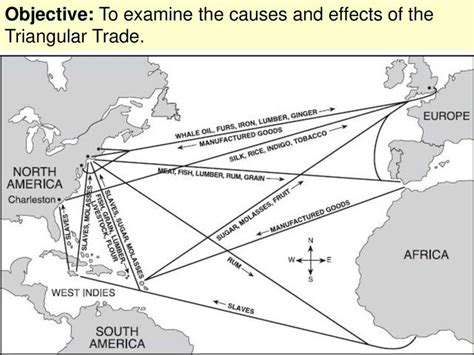The Dawn of Civilization
The story of human civilization begins in the “Fertile Crescent” region of the Middle East around 10,000 BC. This area witnessed the emergence of the first permanent settlements, the domestication of animals, and the development of agriculture.

Key Figures:
- Population of the Fertile Crescent in 8,000 BC: 1-2 million
- Number of cities established in Mesopotamia by 3,500 BC: over 100
The Rise of Empires
In the centuries that followed, powerful empires emerged around the globe. The most notable among them were:
- Ancient Egypt (c. 3100-30 BC): Known for its pyramids, hieroglyphics, and advanced mathematics.
- Mesopotamia (c. 3500-539 BC): The birthplace of writing, law codes, and the wheel.
- Ancient Greece (c. 800-146 BC): The cradle of democracy, philosophy, and the arts.
- Roman Empire (c. 509 BC-476 AD): A vast empire that spanned Europe, North Africa, and the Middle East.
Key Figures:
- Area of the Roman Empire at its peak: over 5 million square kilometers
- Population of the Roman Empire at its peak: approximately 120 million
The Age of Exploration
From the 15th century onwards, Europeans embarked on a period of intense exploration and colonization. This era saw the discovery of the Americas, the establishment of trade routes, and the expansion of European empires.
Key Figures:
- Number of transatlantic voyages made by Christopher Columbus: 4
- Percentage of the world’s landmass colonized by European powers by the end of the 19th century: over 85%
The Industrial Revolution
The 18th and 19th centuries witnessed the transformative power of the Industrial Revolution. This period brought about advancements in technology, transportation, and manufacturing, leading to unprecedented economic growth and urbanization.
Key Figures:
- Rate of industrial production growth in England from 1750-1850: over 200%
- Percentage of the global population living in urban areas by 1900: 10%
The 20th Century and Beyond
The 20th century was a tumultuous time marked by two world wars, the Cold War, and decolonization. The advent of the information age has also played a significant role in shaping the global landscape in the 21st century.
Key Figures:
- Number of countries that gained independence in the 20th century: over 80
- Rate of internet penetration globally in 2023: over 60%
The Interconnectedness of Humanity
Throughout history, humans have interacted, traded, and migrated across vast distances. This interconnectedness has shaped our cultures, beliefs, and even our genetic makeup.
Key Findings:
- A recent study found that over 99% of humans share a common origin in Africa.
- Over 250 million people live outside their country of birth today.
- Global trade has reached a record high of over $30 trillion annually.
The Challenges and Opportunities of the 21st Century
The 21st century presents new challenges and opportunities for global history and geography. These include:
- Climate change and its impact on human societies
- The rise of globalization and its implications for economic inequality
- The increasing interdependence of the world’s nations
- The advent of new technologies and their potential to transform our lives
Addressing the Challenges and Embracing the Opportunities
To address the challenges and embrace the opportunities of the 21st century, we need to:
- Invest in education and innovation
- Promote sustainable development
- Foster cooperation and collaboration among nations
- Embrace diversity and inclusivity
- Harness the power of technology for good
Conclusion
Global history and geography offer a fascinating lens through which we can understand the human experience. By exploring the interconnectedness of our past, present, and future, we gain valuable insights into the challenges and opportunities facing humanity. By embracing this knowledge, we can work together to create a more just, sustainable, and prosperous world for all.
Additional Tables
Table 1: Major Civilizations of Antiquity
| Civilization | Period | Key Innovations |
|---|---|---|
| Ancient Egypt | c. 3100-30 BC | Pyramids, hieroglyphics, mathematics |
| Mesopotamia | c. 3500-539 BC | Writing, law codes, wheel |
| Ancient Greece | c. 800-146 BC | Democracy, philosophy, arts |
| Roman Empire | c. 509 BC-476 AD | Roads, aqueducts, concrete |
Table 2: Key Events in the Age of Exploration
| Event | Date | Significance |
|---|---|---|
| Christopher Columbus’s first voyage to the Americas | 1492 | Discovery of a new continent |
| Vasco da Gama’s voyage to India | 1498 | Establishment of trade route with the East |
| Ferdinand Magellan’s circumnavigation of the globe | 1519-1522 | Confirmation of the Earth’s spherical shape |
Table 3: Impacts of the Industrial Revolution
| Impact | Benefits | Challenges |
|---|---|---|
| Technological advancements | Increased production, economic growth | Pollution, environmental degradation |
| Improved transportation | Faster travel, expanded trade | Overcrowding, traffic congestion |
| Urbanization | Job creation, cultural diversity | Slums, poverty |
Table 4: Key Trends in the 21st Century
| Trend | Impacts |
|---|---|
| Globalization | Increased interdependence, economic growth |
| Climate change | Sea level rise, extreme weather events |
| Technological advancements | Improved healthcare, communication |
